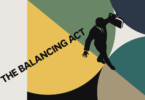When “CODA” won Best Picture at this year’s Academy Awards, the movie shone a light on the experiences of deaf people.
“CODA” became the first film with a predominantly deaf cast to win the honor while cast member Troy Kotsur was the first deaf male actor to win an Oscar. (Co-star Marlee Matlin was the first deaf performer to earn an Academy Award, receiving Best Actress for “Children of a Lesser God” in 1987. Matlin will be a keynote speaker at ICON 2022 in November.)
The movie “raises awareness that a deaf person can do whatever they want to do,” “CODA” co-star Daniel Durant, who is deaf, said in sign language, which was then spoken aloud by an interpreter, during PRSA’s April 27 webinar, “Supporting Deaf Representation in Media.”
The latest in PRSA’s “Diverse Dialogues” series marked National Deaf History Month. (These sessions have featured a sign-language interpreter since their inception in 2020.) Maria Monte de Rey, chair of the California Association of the Deaf Media Committee, moderated the panel that also featured Delbert Whetter, a film producer and consultant.
In “CODA” (which stands for “Children of Deaf Adults”), a young woman played by actress Emilia Jones is the only member of the Rossi family who is not deaf. The family owns a fishing business and its members are leaders of their community.
“You can see deaf people in a different light through that portrayal,” Whetter said. “Deaf people like us are part of society. But they have been marginalized, not recognized. Their voices have not been heard.”
Through films like “CODA,” Whetter said, “we can allow our culture and our language to finally be heard.”
How communicators can assist deaf talent
The same barriers that deaf people face in the movie business also arise in media relations and other PR functions, the panelists said. PR professionals can help prepare journalists for interviews with deaf actors, writers and other storytellers to help be better allies and more inclusive communicators.
For starters, Whetter said, it’s important to get the terminology right. The phrase “hearing impaired” is now considered offensive. “Deaf” is a more acceptable term.
Be ready to adapt to the talents’ needs, said Whetter, who’s on the board of RespectAbility, a national nonprofit that promotes representation and authentic portrayals of people with disabilities in media. The organization offers a guidance document to help prepare journalists for interviews with deaf talent.
For example, a deaf person being interviewed for TV has to be able to see his or her sign-language interpreter. “You don’t want the cameras to block them,” Whetter said. “You don’t want the lights to be so bright that the deaf talent cannot see the interpreter.”
Durant was once handed a microphone during an interview. Whetter recommended documenting such mistakes and then cautioning interviewers against them in advance.
“Our world is truly visual,” said Whetter, who urges the use of captions, subtitles and written or symbolic descriptions of sounds. “We don’t think about hearing; we think about visual contexts.”
On social media and in video or film content, “Captions benefit all of us,” Durant said.
Whetter, who comes from three generations of a deaf family, recommended hiring deaf professionals as consultants for PR-related campaigns and marketing initiatives.
“Authenticity is extremely important,” he said. “If no representation of disabilities appears onscreen, or if there are inauthentic or negative portrayals of disabilities, that really affects our worldview and how people perceive the deaf and disabled in a negative light.”
“I’m proud to be deaf,” Durant said. “All people have their special gift. Don’t ignore your talent. It will lead you to success.”







